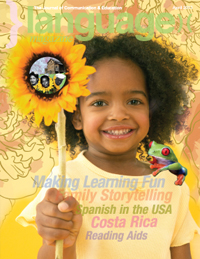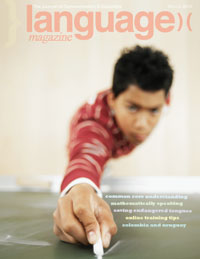
Common Core State Standards are putting more pressure on all teachers to help English learners achieve literacy proficiency, so here are resources designed to lighten the load
Blake eLearning
Reading Eggs & Reading Eggspress
Grades Pre-K-6
Reading Eggs and Reading Eggspress make learning to read an enjoyable, rewarding, and exciting experience for pre-K- through sixth-grade students.
Edmentum
ESL ReadingSmart
Grades 4-High school
ESL ReadingSmart is a standards-based English language learning program for 4th through 12th grade students.
Edmentum
ReadingMate
Grades 4-High school
ReadingMate is a web-based individualized reading intervention program that prepares students in fourth through twelfth-grade to read at grade level and develop the necessary reading skills for college and career readiness.
Edmentum
Study Island
Grades K-12
Study Island’s high-impact, high-value state standards mastery and test preparation program is specifically designed to help master the content specified in state and Common Core Standards.
Edmentum
EducationCity
Grades Pre-K-6
EducationCity is an online instructional and intervention solution that provides fun, engaging, research-based lessons and activities for pre-K- through sixth-grade students in language arts, math, and science.
MindPlay
MindPlay Virtual Reading Coach
Grades K-Adult
Provides both core curriculum and supplemental reading instruction, and is a complete reading solution. Covering all of the National Reading Panel’s recommendations for reading instruction, as well as including grammar and meaning, MVRC gets students reading at grade level in only 30 minutes a day, four days a week.









